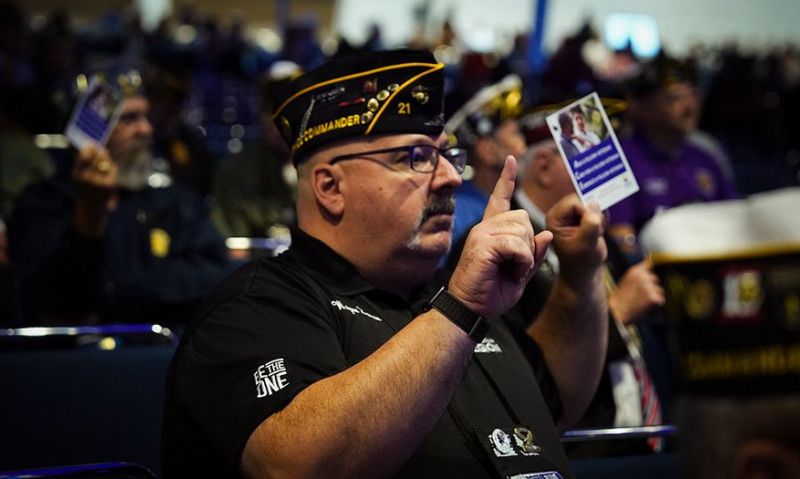
In what is believed to be the largest single suicide prevention training session, American Legion Family members learn how they can be the one.
The American Legion conducted what is believed to be the largest single suicide prevention training session during its 105th national convention on Aug. 28 in New Orleans. An estimated 5,000 people took the training, while 300 American Legion Auxiliary members attended a session earlier in the week, bringing the total to roughly 9,100 since February when the first class was held.
“There has never been a bigger training session than this in The American Legion,” National Commander Dan Seehafer said as he rallied audience members. “But you are going to be part of it. We’re going to change lives and save lives.”
The suicide prevention training is a cornerstone of The American Legion’s Be the One mission, which aims at reducing the number of veterans and servicemembers lost to suicide each year. As part of Suicide Prevention Awareness Month in September, there will be five free virtual training sessions, which will be led by the Columbia University Lighthouse Project. The first 90-minute session is Sept. 5. Check out the schedule and sign up for one that fits your schedule.
Seehafer implored American Legion Family members to step up, take the training and Be the One when a veteran is in crisis.
“We are never ever going to be silent again,” he said before introducing the two trainers from Columbia, Wendy Lakso and Dr. Keita Franklin.
They led the training, walking participants through the Columbia-Suicide Severity Rating Scale, which gives a suicide risk assessment via six questions that anyone can ask to help identify whether someone is at risk for suicide and how to intervene if they are.
“We are thrilled to partner with The American Legion and be part of the Be the One foundation and the solution to end veteran suicide,” said Lakso, director of partnerships and veteran and military initiatives for the Columbia Lighthouse Project. Her husband served in the Army for 30 years, one of her sons was in for six years and another son is currently stationed in South Korea.
Franklin’s family has members in both the Navy and Air Force. “I want you to know how serious the problem is,” she said. “This is a big differentiator, getting up in front of all of you and giving you the tools to save a life today.”
Waco Hoover, chairman of Be the One, put the session into perspective.
“This is significant because it signifies a huge milestone with gaining critical mass across our community,” he said. “In a very short period of time, we will have trained 10,000 of our Legionnaires and staff members. Then those individuals go back to their posts, their families, their jobs, their schools, their churches, it represents a tremendous opportunity to have a ripple effect. Not only across the Legion and military community but across the entire country. Because this is not just a veteran and military problem, it is an American problem.”
Lakso said there are already success stories from the thousands who have taken the training. In fact, at this week’s Auxiliary class a mother opened up to her daughter about the suicidal thoughts she had years earlier.
“It opened up some things between the mother and daughter,” Lakso explained. “And we are just thankful that we were able to provide this tool for them.”
She recommends all American Legion Family members take the training. “It’s what The American Legion is standing for,” she said. “And we all want to be part of the solution. You can’t do anything more important than helping somebody else. To be part of that movement is everything.”
Hoover looks ahead to the training being further amplified during September and beyond.
“Our goal is to train millions of Americans on suicide prevention, so people are armed with the tools to help one another and get them to the right care,” he said, pointing to examples of how the training helps him identify at-risk veterans.
One example: when a veteran starts giving away their belongings. “That in itself isn’t a big thing,” he said. “But if you couple that with some substance abuse, insomnia, anxiety, people getting angrier. Then you can sit with someone — it can be scary — but you will be prepared to have a conversation with Bob, or Susie, because something doesn’t add up.”
While the 10,000 mark is notable, the most significant number still remains one.
“This is an incredible step in the right direction for the Legion, the veteran community and our families to lead in a way that we have not before,” Hoover summed up. “Until now, we haven’t had boots on the ground but now we do. And that is going to have a profound effect on veteran suicide. That’s the goal — saving lives, one veteran at a time, when each of us is willing to be the one.”
- Be the One

